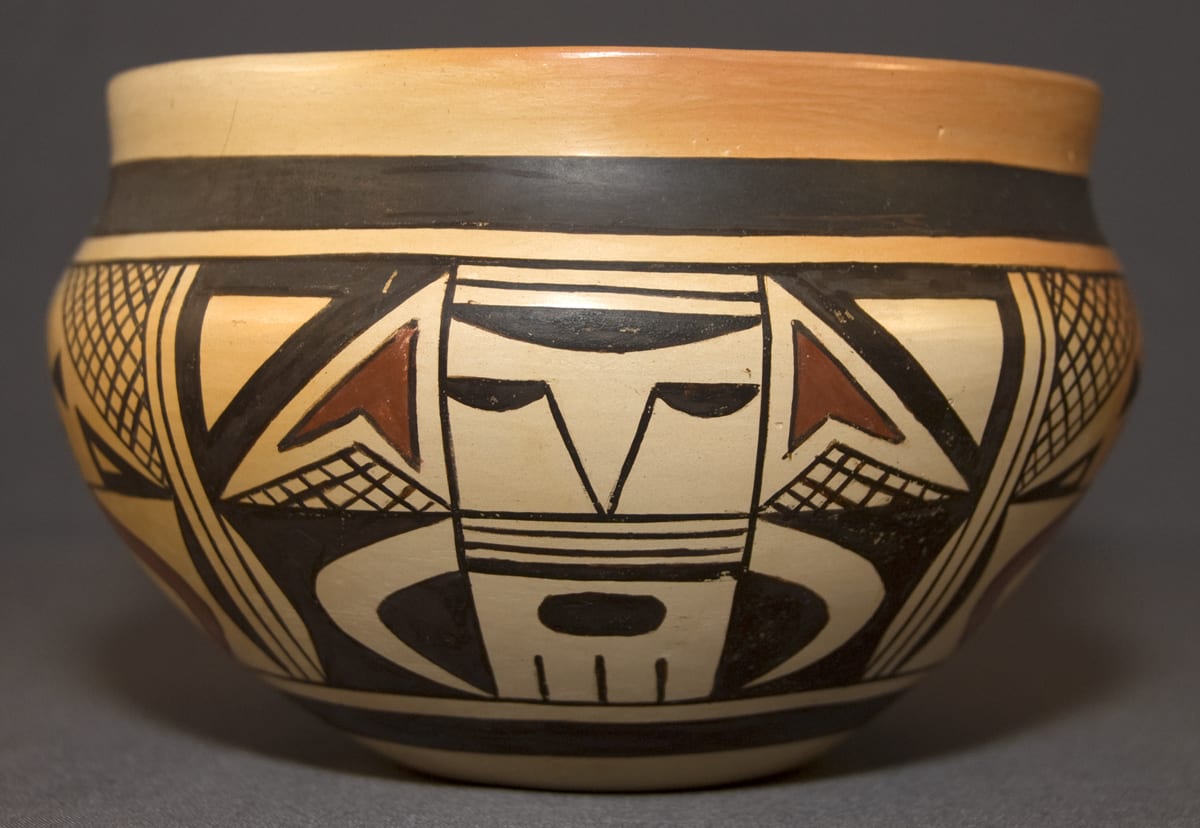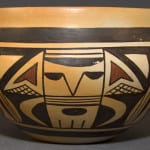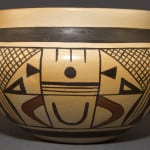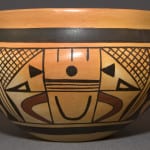Pot 2011-10 is extremely thin, even and therefore lightweight. If formed from coils of clay rather than on a wheel, Michael has extraordinary potting skills. The exterior is painted with two panels of design. One includes a version of Nampeyo’s “clown face,” the other includes webs of crosshatching and may be an abstract rendition of a Katchina. Each panel is repeated twice; each includes a pair of red elements, the only color on this otherwise monochromatic pot. The interior of the pot is painted with a five-lobed migration design, two lobes on one side of an axis and three on the other. The first and last lobes on the three-lobe side are smaller than the other three in order to fit them into the design. One lacks the longer final “tooth” exhibited by the other four “wings” in the design. Apparently Mike ran out of space. The interior design is encircled by thick over thin framing lines, a family tradition established by “the Old Lady” five generations before Mike was born. Since the mouth of pot 2011-10 is only four inches wide, the ability to paint a complex design on the interior is impressive. In short, the painting (both interior and exterior) is carefully but not perfectly done, just the kind of hand-made look that excites my eye.
Purchase History:
Purchased on 5/25/11 on eBay from Masako Kodara of Albuquerque, NM. [Receipt on file.] He wrote: “I don’t remember when, but I might (have gotten) this when I visited Rachel Shamie’s house in Hopi. She was not there, but there was lots of potteries display(ed) in her house…Nyla was there when I stopped by….” I suspect the house mentioned was Priscilla’s home on the road to the top of First Mesa. Nyla has been living there at times; the family has been selling pottery from the home since the time it belonged to Annie.








